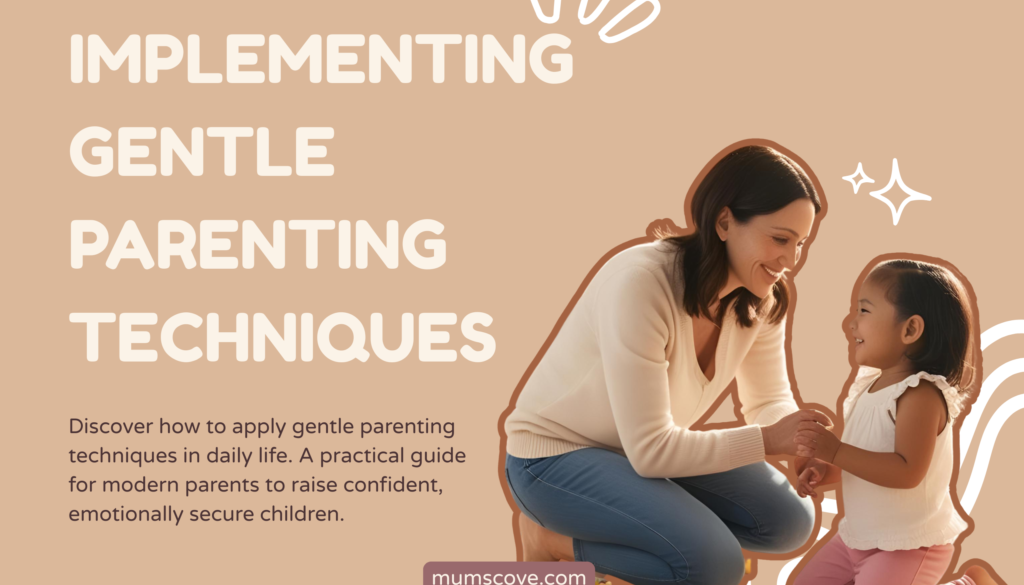Implementing Gentle Parenting Techniques: A Practical Guide for Modern Parents
👪 Introduction: What Is Gentle Parenting & Why It Matters Today
Modern parenting is evolving—and with it, the way we connect with our children. Gentle parenting is a mindful, respectful approach that focuses on empathy, understanding, and boundaries instead of punishment. If you’re a modern parent seeking to raise emotionally intelligent, confident kids, this guide will give you practical gentle parenting techniques you can start using today.
🧠 The Core Principles of Gentle Parenting
1. Empathy First
Gentle parenting is rooted in empathy. It encourages understanding your child’s emotions before reacting. When a child has a tantrum, a gentle parent asks, “What is my child trying to communicate?” rather than reacting with anger.
2. Respectful Communication
Children deserve the same respect we expect from others. This means no yelling, shaming, or manipulation. Speak to your child the way you’d like to be spoken to during tough moments.
3. Consistent Boundaries
Being gentle doesn’t mean permissive. Clear, kind boundaries create safety. For example, “I won’t let you hit, but I will stay with you while you’re upset.”
🧩 How to Start Gentle Parenting (Even If You’re New to It)
If you weren’t raised with gentle parenting, it’s okay. Here’s how to transition:
-
Start with self-awareness: Recognize your emotional triggers.
-
Respond, don’t react: Take a breath before addressing behavior.
-
Replace punishment with connection: Ask, “What does my child need right now?”
-
Model the behavior you want to see.
🛠️Practical Gentle Parenting Techniques for Daily Life
1. The “Pause and Connect” Method
When your child misbehaves, pause. Kneel to their level. Say, “I see you’re upset. Let’s figure this out together.” This creates connection and diffuses tension.
2. Validate Emotions
Instead of dismissing feelings (“Stop crying!”), say: “I see you’re really sad. It’s okay to cry. I’m here.” Emotional validation builds trust.
3. Offer Choices, Not Commands
Instead of “Put on your shoes now,” try “Would you like to wear your red or blue shoes today?” Giving choices helps children feel respected and in control.
🧭 Real-Life Example: A Morning Meltdown
Let’s say your toddler refuses to get dressed. A gentle parenting approach:
Old way: “Get dressed now or you’re in trouble!”
Gentle way: “You don’t want to get dressed today, huh? I understand—it’s cozy in pajamas. Would you like me to help you, or do it together as a race?”
This small shift shows empathy and invites cooperation.
🔄 Gentle Parenting for Different Age Groups
Babies (0–2 Years)
Focus on meeting needs with love, holding, and responsiveness. Crying is communication.
Toddlers (2–4 Years)
Set firm, kind limits. Allow choices. Narrate their feelings: “You’re frustrated because the toy isn’t working. That’s hard.”
School-Age Children (5–10 Years)
Encourage problem-solving. Include them in decision-making. “What do you think we can do to fix this?”
Teens (11–18 Years)
Build trust through open conversations. Respect their autonomy. Validate their experiences—even if you don’t agree.
🔗 Internal & External Linking Suggestions
Internal:
External:
💡 Bonus Tips for Gentle Parenting Success
-
Keep a parenting journal to reflect on your triggers.
-
Join a gentle parenting support group online.
-
Celebrate progress, not perfection.



